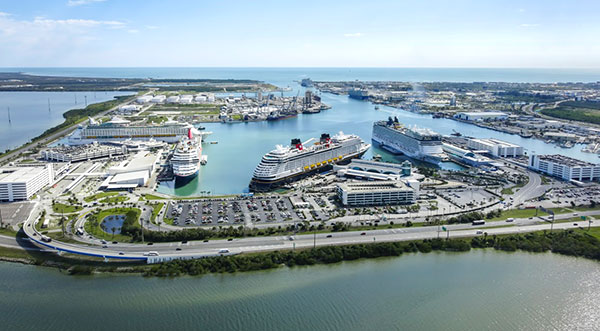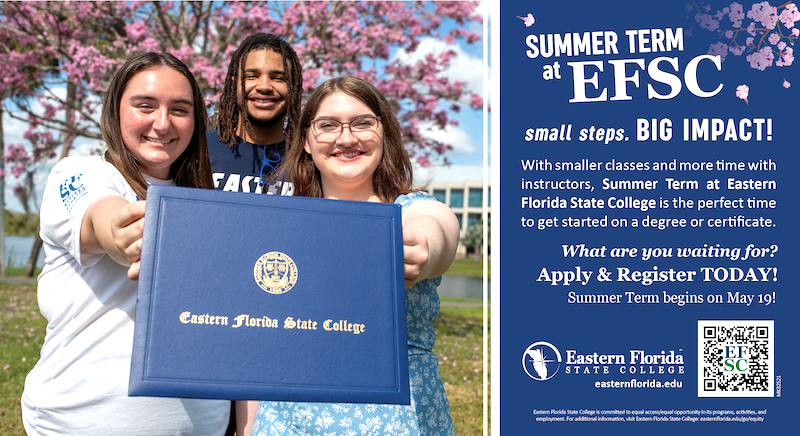Navigating the Madrid System: How to Register a Trademark Internationally
By Space Coast Daily // June 25, 2023

The Madrid System is a crucial mechanism for businesses and individuals seeking to protect their trademarks internationally. It offers a streamlined and cost-effective approach to registering trademarks in multiple countries simultaneously.
In this blog post, we will delve into the details of the Madrid System and provide a step-by-step guide on how to navigate this international trademark registration process successfully.
Understanding the Madrid System
The Madrid System is an international treaty administered by the World Intellectual Property Organization (WIPO) that enables trademark owners to seek protection in multiple countries through a single application. It simplifies the process by allowing applicants to designate member countries where they wish to secure trademark protection.
Madrid System vs. National Applications
Compared to filing separate national applications, the Madrid System offers efficiency and convenience for international trademark registration. Trademark owners can expand their protection to multiple countries with reduced administrative efforts and costs. Additionally, the Madrid System simplifies the process of managing and renewing international trademarks, as it allows for centralized maintenance.
Eligibility and Requirements
To utilize the Madrid System for international trademark registration, certain eligibility criteria must be met. Typically, applicants should have a connection to a member country, either through nationality, domicile, or a real and effective industrial or commercial establishment. Additionally, the trademark should already be registered or applied for in the home country.
Eligible Applicants
Applicants who are nationals or domiciled in a member country of the Madrid System are eligible to use this international registration system. Furthermore, individuals or businesses that have a real and effective industrial or commercial establishment in a member country can also benefit from the Madrid System.
Home Country Application or Registration
Before seeking international registration through the Madrid System, it is essential to have a trademark application or registration in the home country. The home country serves as the basis for the international application, and any subsequent changes or renewals to the mark will be linked to the original home country filing.
Preparing for International Registration
Before initiating the international registration process, thorough trademark research and clearance should be conducted to ensure that the proposed mark is available for registration. It is also important to determine the list of member countries where protection is desired. An understanding of the specific trademark laws and requirements of those countries is crucial.
Trademark Research and Clearance
Trademark research is a critical step to assess the availability and registrability of the proposed mark. Conducting comprehensive searches in relevant trademark databases helps identify any potential conflicts with existing marks. Clearance ensures that the mark is not already registered or in use in the target countries.
Selecting Member Countries
Trademark owners need to carefully consider which member countries to designate in their international application. Factors such as target markets, business expansion plans, and existing or potential competitors should be taken into account. It is advisable to consult with intellectual property professionals familiar with the laws and practices of the desired countries.
Filing the International Application
The next step involves submitting an international application through the national trademark office or regional IP office of the applicant’s home country. The application should include detailed information about the mark, the applicant, and the designated member countries. WIPO then examines the application and forwards it to the designated countries for individual examination.
National Office Examination
The international application undergoes an examination by the trademark office of the applicant’s home country. This examination verifies compliance with the basic requirements of the Madrid System, such as completeness of the application and conformity to the prescribed format.
WIPO Examination and Publication
Once the application passes the national office examination, WIPO examines it for compliance with the formalities under the Madrid System. If no issues are found, WIPO records the mark in the International Register and publishes it in the WIPO Gazette of International Marks.
Substantive Examination and Protection
Once the application reaches the designated countries, each country’s trademark office conducts its own examination based on their national laws and regulations. If no objections or refusals are raised within the specified time frame, the mark is granted protection in those countries, typically as if it were filed directly with each national office.
National Examination and Protection
Each designated country’s trademark office examines the mark according to its national laws and regulations. If there are no objections or oppositions within the specified time, the mark proceeds to registration and receives the same protection as if it were filed directly with that national office.
Central Attack Provision
During the first five years of an international registration, if the mark is refused or canceled in the home country, it may affect the protection in the designated countries. This provision is known as the “central attack.” Trademark owners should be aware of this and consider safeguarding their rights by maintaining a separate national registration in critical markets.
Maintenance and Renewal
Registered international trademarks require periodic renewal to maintain their protection. The renewal process is managed through the Madrid System, simplifying the administration of renewals in multiple countries simultaneously.
Renewal Procedures
Trademark owners can submit a single renewal application through the Madrid System to renew protection in all designated countries. This streamlines the process and reduces administrative burdens. Renewals are typically required every ten years, and timely renewal ensures the continued protection of the trademark.
Changes and Updates
Trademark owners can make changes or updates to their international registration, such as amendments to the mark or changes in ownership or name. These modifications are managed through the Madrid System, ensuring consistency across all designated countries.
Benefits and Considerations
The Madrid System offers numerous benefits, including cost savings, administrative convenience, and efficient management of international trademark portfolios. However, it is important to consider potential drawbacks such as dependency on the home country registration and the possibility of central attack during the first five years.
Benefits of the Madrid System
- Cost savings by filing a single international application instead of separate national applications
- Simplified administration and centralized management of international trademark portfolios
- Efficient expansion into multiple countries without navigating individual registration systems
Considerations and Drawbacks
- Dependency on the home country registration for the international application
- Central attack provision during the first five years of an international registration
- Need to monitor and comply with individual country requirements and deadlines
Conclusion
Navigating the Madrid System for international trademark registration can be a highly advantageous strategy for businesses expanding globally. By understanding the process, eligibility requirements, and intricacies of individual member countries, trademark owners can protect their brands efficiently and cost-effectively across borders.
The Madrid System serves as an invaluable tool, simplifying the complex task of registering trademarks internationally and fostering global brand protection.
With proper preparation and guidance from intellectual property professionals, businesses can leverage the Madrid System to secure valuable trademark protection worldwide.












